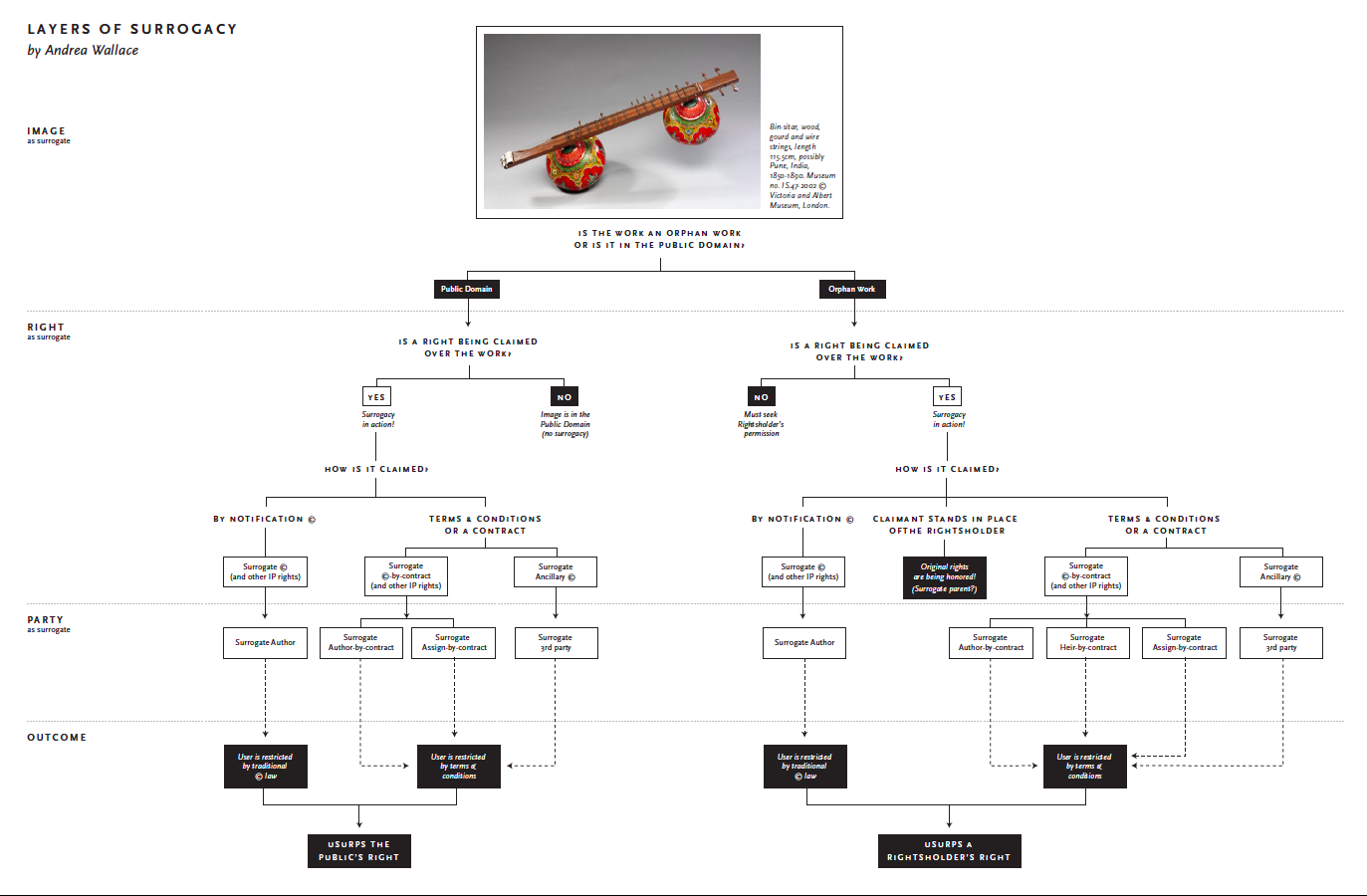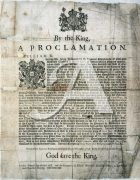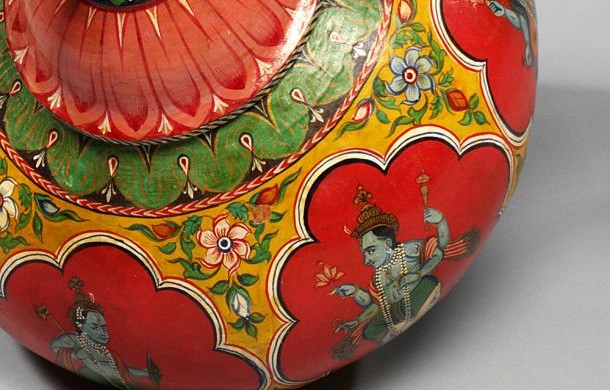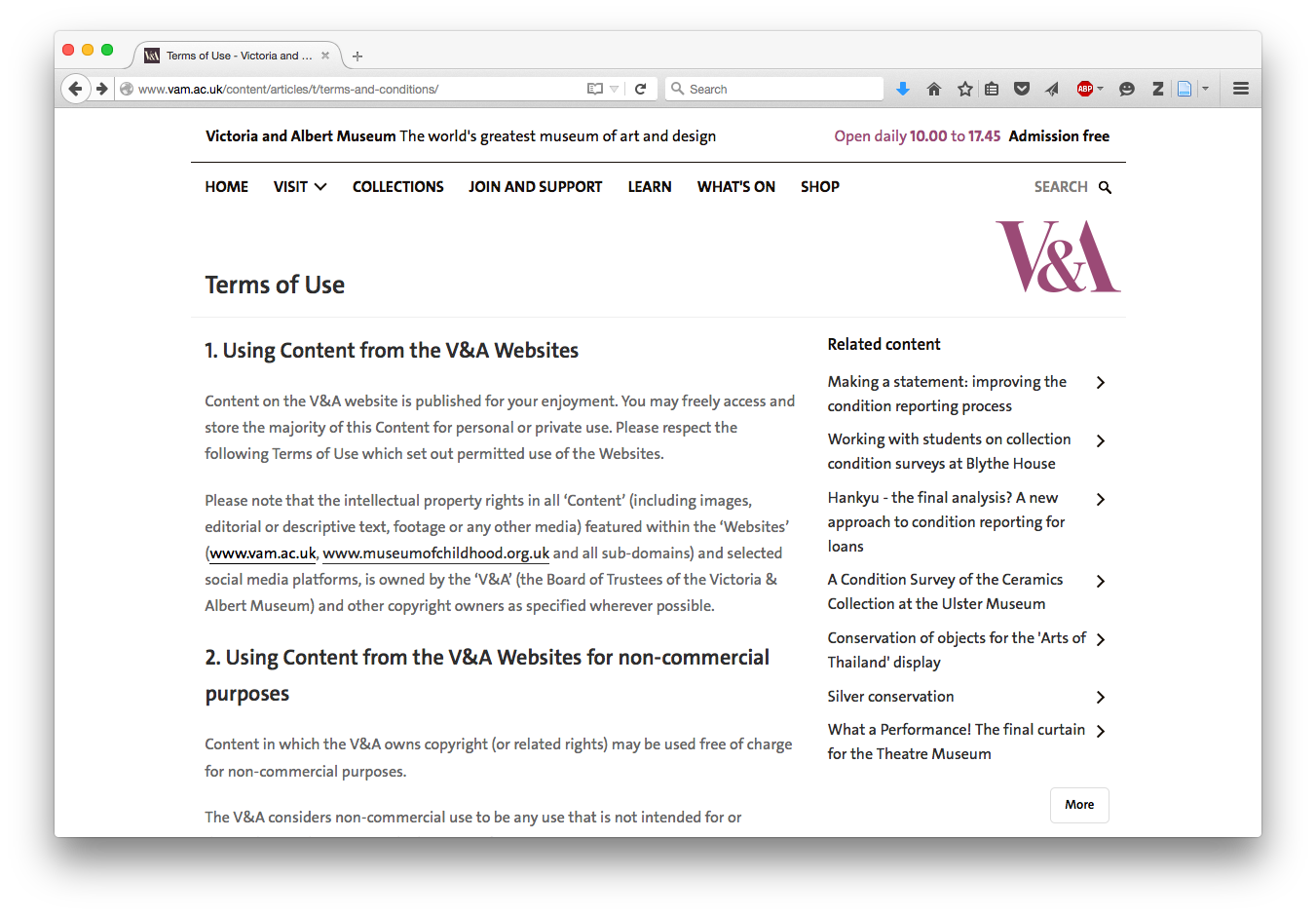Bin-sitar (detail) © Victoria and Albert Museum, London.
Surrogacy Layers
I recommend that you first read “What are Surrogate IP Rights” and “Surrogate Rights Explained” before falling down this surrogate rabbit hole (see what I did there?).
Surrogacy comes in all kinds of layers (and layers within layers). Trust me; I’ve got binders full of layers.
Let’s use the Victoria and Albert Museum as an example (the 2015 policy, which is when this was written). Keep in mind that the following examples are taken out of context of the full website and its terms of use. When read in its entirety, the V&A actually has a pretty decent policy compared to other UK institutions.
The Image as a Surrogate
First, and as previously stressed, the image (be it digital or analogue) is a surrogate for the object. In this case, that object is:
The image’s value is dependent on the value of the underlying work. Someone who wants to use this specific image wants to use it because the underlying work itself is the object of desire and holds meaning. Thus, the image of the bin-sitar is a surrogate for the actual bin-sitar.
The Rights as Surrogate
Surrogate IP Rights (including copyright, moral rights, etc.) by Notification ©
Second, if a cultural institution claims a right over the image as its own intellectual property, that claim operates as a surrogate IP right over a public domain work that was previously unrestricted. Institutions do this through making use of the © notification. That new copyright itself is a straight-up surrogate copyright: however, because it is claimed through copyright law, it is defined by copyright law and restricted to its protections. The object is in the public domain, but its digital version is not. Whether this is legal, or even fair, will be addressed in a future post about this specific issue (spoiler alert: it’s complicated).
Here, a copyright is claimed by the V&A over the image of this public domain object:

Not all cultural institutions claim a copyright over digital reproductions. Some state that the underlying object’s intellectual property rights also apply to a digital image of the object (for example, the National Library of Wales does this). Therefore, if the object is in the public domain, so too is its surrogate.
Others don’t claim a copyright expressly. Instead, they establish one through the language in the terms and policies of their website, which brings me to…
Surrogate IP Rights by Contract
Third, if you read the fine print on a website, it’ll say something like this:

Now, these were the V&A’s Terms of Use up until July 2015. The new relevant paragraph is more relaxed:
Statements like these mean exactly what they say. By accessing the site (pre-July 2015 version), you agreed to its full terms. You were bound by this contract (of adhesion) and all of the other terms on the website, whether you read them or not. And, since you so have graciously agreed to them (and post-July 2015 to simply respect them), the terms can be enforced against you:
Let’s look at the part about image use:
See there? Doesn’t that sound a lot like copyright? Well, that’s because it kind of is. It’s basically a copyright-by-contract. But that’s not the only thing that’s being established through a contract. In other areas of the website, you’ll find obligations to cite the original author (a moral right, which has technically expired, so it’s now a surrogate moral right being exercised by a surrogate party) and an obligation to cite the institution (wait, does that make it a surrogate, surrogate moral right? HELP!).
Some institutions (like in the example above) say they own all content and data too. There are two problems with this. First, it’s not clear whether an image would qualify as “content.” And, second, data is (maybe you’ve already guessed it) supposed to be part of the public domain. According to such language, is data covered by “content” too? Oh dear.
Something else to thoroughly confuse you: if you can draft language to establish a surrogate copyright-by-contract you can also establish surrogate ancillary rights. Yup, you guessed it. The surrogate copyright-by-contract resembles what you’d get through a copyright, even though a copyright is not being explicitly claimed through © notification. The things being claimed that fall outside of traditional copyright protections? Those are ancillary rights. Thus we have surrogate ancillary copyright.
Just a few more to go… yahoo!
The Party as a Surrogate
Last, but not least, we have the surrogate party. Beware; this party is going to be wild.
Now, what kind of surrogate party is kind of dependent on the work and the rights being claimed.
First, we’ll look at public domain works.
For a surrogate copyright that is claimed by © notification over a surrogate image, we have a surrogate author.
For a surrogate copyright-by-contract, we have: (1) a surrogate author-by-contract when ©-by-contract is claimed; (2) a surrogate assign-by-contract when only ownership rights are claimed; or (3) a surrogate third party if surrogate ancillary © is claimed. Let’s look at each of these cases individually.
In the first case, authorship is established through language without using the © notification. This produces a surrogate author-by-contract.
By law, authors may assign their copyright over to another. That “assign” then has ownership over all of the rights that normally come with a copyright. With copyright-by-contract, however, remember that no copyright over the image is being expressly claimed. Thus, in the second case, ©-by-contract rights have been established, but no claim to authorship over the image is present. Instead, the language establishes rights resembling those claimed by someone who has been assigned an author’s copyright protections: a surrogate assign-by-contract.
In the third case, a surrogate ancillary copyright is established through binding language and claimed by a third party (the cultural institution).
Surrogacy and Orphan Works
Now let’s tackle orphan works. Disclaimer: orphan works are not (technically) in the public domain because they are still (likely) in copyright; however, they’re still incredibly relevant to surrogate IP rights. I’ll explain. We refer to these works as “orphans” because we lack key details about the work that would help us find the rightsholder. Maybe it’s a film made in the 1980s, a book written in 1948, or a photo of an important World War II battlefield. If we can’t find the rightsholder, then we can’t ask for permission to use the work, right?
There are several ways this can play out. First, we might not know who the author actually is. This probably means we also don’t know when, or if, this unknown author died. Second, maybe we do know who the author is, but we still don’t know when, or if, the author died. Copyright expires 70 years after an author’s death. In both cases, we can’t determine the copyright’s date of expiration.
In addition, remember that IP rights pass to an author’s heirs upon death. So, third, maybe we do know who the author is and we know the date of death, but we don’t know who the heirs are. Finally, maybe we know everything about all of these details, but we just can’t locate the rightsholder, which could be the author (if still alive) or the heirs. The point here is that the copyright (probably) still exists and belongs to a legitimate party, but its rights are being enforced (or not) by a surrogate party.
When cultural institutions have orphan works in their collections, they often state that they hold the work and grant access to it in place of the author. Cultural institutions act as stewards for these authors; should the rightsholder ever come forward, the cultural institution will turn the rights over, gladly. This means the rightsholder’s rights are being respected.
In many cases, however, cultural institutions claim surrogate rights over the digital reproductions of orphan works. There are two main differences between surrogacy over public domain works and orphan works.
First, we see another type of surrogate party for orphan works: the surrogate heir. When cultural institutions use language that establishes surrogate IP rights-by-contract, they are acting as either a surrogate author-by-contract or a surrogate heir-by-contact. The distinction depends on whether the author is alive or has died, at which time the rights pass to the heirs.
The second distinction is in the final outcome as to whose rights are ultimately being affected. When surrogate IP rights are claimed over a surrogate image, a legitimate party is usurped of legally-recognized rights. Where a work is in the public domain, the usurped party is the public. Where a work is an orphan, the usurped party is the author, the heir, an assign, or a third party.
To visualize this, here’s a draft of a friendly flow chart that I’m working on to help me keep this all straight. I hope it helps you too.







